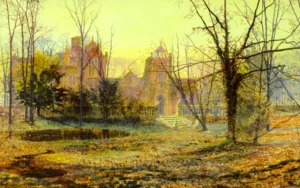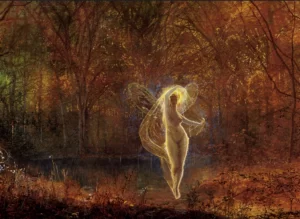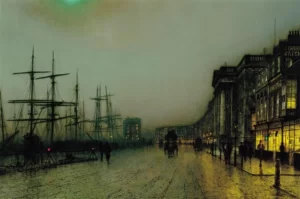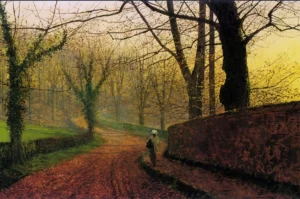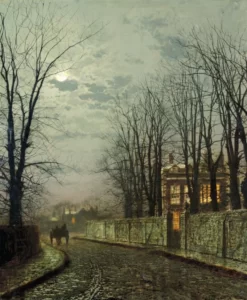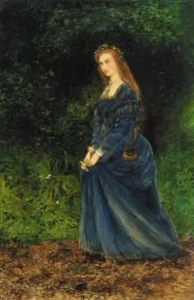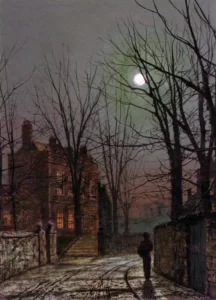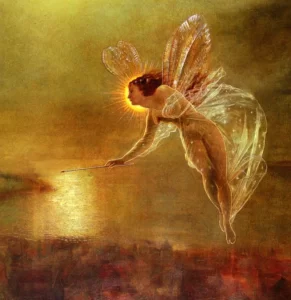John Atkinson Grimshaw (6 September 1836 – 13 October 1893) was an English landscape painter best known for his depictions of moonlight urban scenes and damp, autumnal lanes often featuring a lonely house and a single figure.[1][2]
Most of what is known about his early life comes from the research done by his grandson, Guy Ragland Phillips, whose mother Elaine Grimshaw was Atkinson Grimshaw’s daughter,[3] one of his fifteen children of whom six survived to adulthood.[1]
Early life
Atkinson Grimshaw was born in a back-to-back houseForm of terraced houses in the United Kingdom, each sharing party walls on three of their four sides. in Park Street, Leeds to David Grimshaw, a policeman, and his wife Mary.[1][4] By 1852 Atkinson Grimshaw was employed as a clerk with the Great Northern Railway Company, and despite apparently never having received any formal training as an artist had begun to paint by the late 1850s.[1]
On 24 October 1856 Atkinson Grimshaw married his cousin Frances Theodosia (1835–1917), daughter of James Dibdin Hubbard, editor of the Wakefield Journal, and in 1861 he gave up his job with the railway to become a full-time painter.[1]
Career
Atkinson Grimshaw’s initial work mainly consisted of landscape and still-life studies, which he first exhibited at Leeds Town Hall in 1862. By the following year his work began to exhibit the influence of the Pre-RaphaeliteGroup of English artists formed in 1848 to counter what they saw as the corrupting influence of the late-Renaissance painter Raphael. style of landscape.[5]
By the late 1860s Atkinson Grimshaw had switched his attention to the depiction of moonlight scenes, which became his trademark genre.[1]
The 1870s were Atkinson Grimshaw’s most successful decade artistically and financially, when he was represented by Thomas Agnew & Sons of Bond Street, London, who bought his paintings between 1871 and 1880 and displayed them for resale at their London and provincial galleries.[1]
Personal life
Atkinson Grimshaw and his family settled in the 17th-century Knostrop Old Hall, two miles (3.2 km) east of Leeds town centre, in 1870, and remained there until his death on 31 October 1893. He was buried on 4 November at Woodhouse Cemetery, Leeds.[1]


